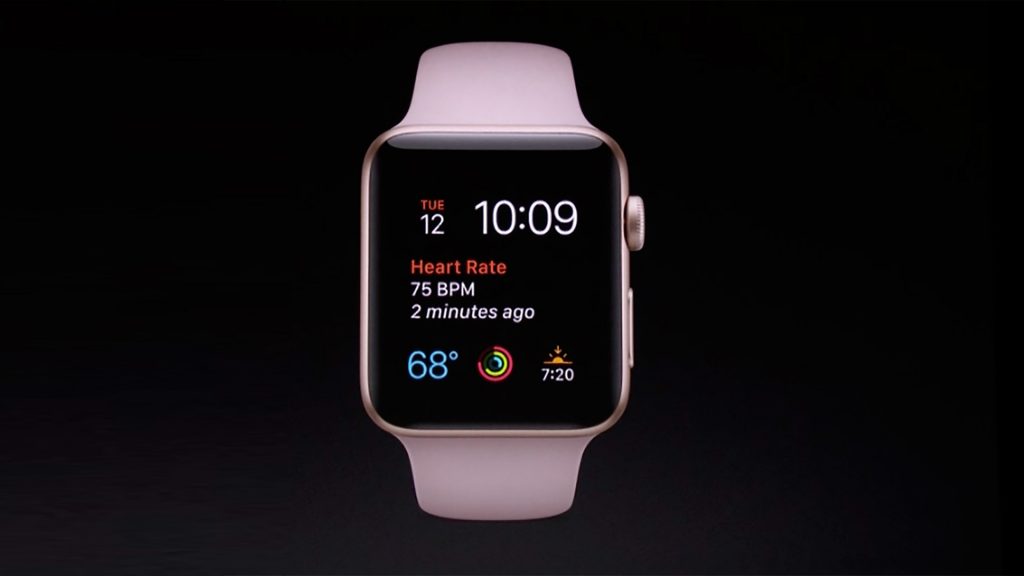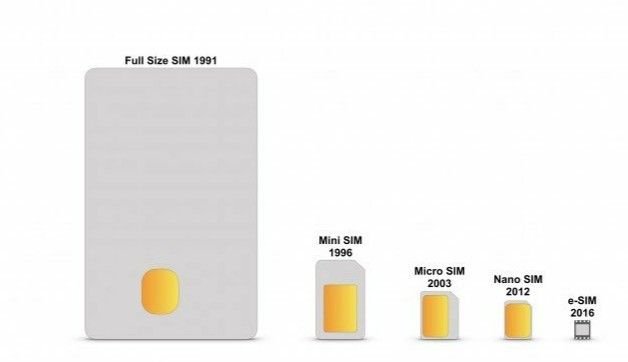E-Sim. The Future of E-Sim Card.
What is an E-Sim?
E-Sim card is belong to Embaded SIM Card.
As the name suggests, it will replace the physical, plastic SIM card all current smartphones use with a virtual embedded equivalent that cannot be removed.
The first time we came across this hardware in person was in the Samsung Gear S2 3G in 2016. However, we expect the Apple Watch 3 with mobile internet will shift a lot more boxes than that watch. The eSIM is going mainstream.
One of the benefits of an eSIM is that it’s absolutely tiny, just a small fraction the size of a nanoSIM. And they’re only the size of my pinkie nail.
This is what makes it so well-suited to ultra-compact gadgets like watches, which simply don’t have the room for a normal SIM.
An eSIM is non-removable, and sits by other internal components. You don’t have to remove it, and it isn’t at risk of compromising any water resistance of a gadget’s shell.
The same Apple Watch 3 can be used by Verizon, T-Mobile or Sprint in the US. Only EE currently offers the Apple Watch 3 in the UK, so network switching isn’t an issue.
One of the most interesting aspects of the Watch 3’s eSIM is that it’ll share your iPhone’s number. You can think of them as part of the same connection. However, this also means it’ll only work with an iPhone – and that your iPhone and Apple Watch will have to be with the same network Provider.

The Internet of Things.
Here at GSMArena we focus on phones first and foremost, but it would be remiss of us to exclude the other devices to benefit from eSIMs. Especially considering that phones are at the core of how we 'activate' and manage those devices.
It's been estimated that within the next few years the Internet of Things devices will become the largest connect category, overtaking mobile phones.
The eSIM not only helps these connected devices work but also enables new categories of devices with less compromise. What if Apple or Samsung had to fit a physical SIM into the Apple Watch Series 3 with Cellular and the Samsung Gear S3 frontier LTE. They would have been bigger? And with even poorer batter life?
Wearables are only one category that benefits from an eSIM. Automotive makers, with the inclusion of an eSIM allows us to quickly connect our cars to cellular.
Laptops will benefit from the inclusion of the eSIM while providing brands and re-sellers the opportunity to up-sell/cross-sell through the use of flexible data bundles.
The future of E-Sim.
The eSIM is the future but it will not happen overnight, look down at your phone now and it's still got a physical SIM, and will still need one when you pass it onto your kids, other family members or sell it. In the Google Pixel 2 and Google Pixel 2 XL the eSIM is currently only used by Google Project Fi and thus it has a physical Nano-SIM card tray for all the other operators.
What is certain though, given the time it will take manufacturers to include eSIM's as standard, operator adoption and the lifecycle of current devices, it wont take another 27 years before we'll see the physical SIM card consigned to history once and for all.

Good
nice
Lyk
Nice
best
cheetah ne phir pakad liya..
Pakra nai he upvotw kia he....pakrta steem cleaner he.....cheeta kay upvote se koi nuqsan nai
Great info
Very informative bro